Displaying items by tag: INNVENTIA
Strong cellulose filaments win the Van den Akker Prize
A research team from the Wallenberg Wood Science Center has won the Van den Akker Prize for Paper Physics for the article ‘Hydrodynamic alignment and assembly of nanofibrils resulting in strong cellulose filaments’, published in Nature Communications.
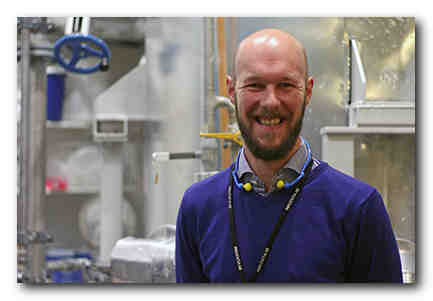
The prestigious Van den Akker Prize is presented each year for the best publication within paper physics. This year’s prize was awarded to an interdisciplinary research team from the Wallenberg Wood Science Center, which includes Innventia, KTH Royal Institute of Technology and Chalmers University of Technology. The team received the prize for the article ‘Hydrodynamic alignment and assembly of nanofibrils resulting in strong cellulose filaments’, published in Nature Communications in June 2014.
Their award-winning work involves putting together fibrils from cellulose to create very strong filaments. In this new method, the fibrils are oriented in a controlled manner along the direction of the filament during the production process.
Innventia has applied for a patent for this new technique for spinning, which is an example of the development of materials from nanocellulose currently being carried out within nanocellulose processes. One contributing factor behind Innventia’s efforts towards new application for nanocellulose is the pilot facility for the production of nanocellulose (also known as CNF), which was opened in 2011. The pilot facility means that sufficient quantities of raw materials can be produced to work with different applications.
“This award is confirmation that what we have achieved is appreciated and is of value to the forest industry, even if it doesn’t relate directly to paper,” says Karl Håkansson, the first author of the article. “So I hope that this cooperation can continue, and perhaps even be broadened to develop the process described in the article further.”
“We’re extremely proud to have received this award,” adds Torgny Persson, Director of the Material Processes business area. “This is an excellent example of successful cooperation between institutes and academia, in terms of both R&D and resources for upscaling and verifying research findings.”
Expanded accreditation for product safety and lignin analyses
Innventia now offers accredited analysis of primary aromatic amines in food contact materials, and of lignin content in pulp.
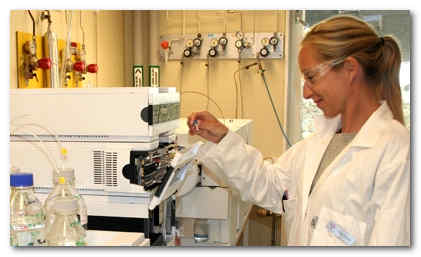
Some substances in the group of primary aromatic amines (PAAs) are carcinogenic. PAAs are utilized in the production of azo pigments that may be used for printing of food contact materials (FCM).
These substances are regulated in many countries, for example in the EU regulation (EU) 10/2011 for plastic materials. Innventia now offers accredited analysis of these substances.
"It means, among other things, that results are internationally comparable, and ensures that analyses meet the performance requirements specified in various regulations", explains Kai-Yee Thim, who is working with product safety of FCM.
The scope of the accreditation is now also being extended with a chemical pulp analysis which will have great impact on the introduction of lignin products. Innventia has a long tradition of chemical pulp analyses, and one of the most common analyses involves determining the lignin content.
"To the best of my knowledge, we're the first in the world to offer an accredited lignin analysis. It means that we are now delighted to be able to offer our customers even more useful and reliable analyses," says Fredrik Aldaeus, quality manager for Innventia's chemical analyses.
As well as creating added value for commissioned research customers, accredited analyses will also be used within Innventia's own research.
"This strengthens our position within both cellulose research and the development of safer food packaging," says Anna Jacobs, research manager of the Chemical and material analysis group.
For more information, please contact:
Fredrik Aldaeus, +46 (0) 8 676 7188, This email address is being protected from spambots. You need JavaScript enabled to view it.
A road map for a Cellulose-Based Society
Innventia will release its third Global Outlook Report in 2016: "A Cellulose-Based Society". The report will examine trends and driving forces affecting the role of the forest industry in a future featuring innovative renewable materials based on cellulose that are used with brand new business models.
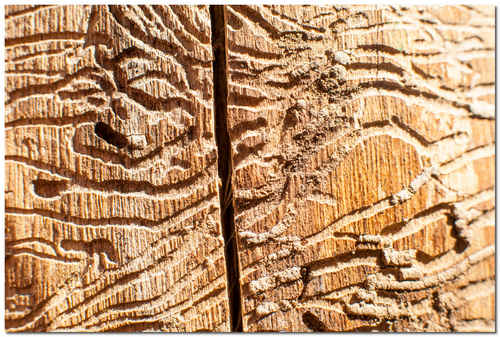
Innventia is now starting the "A Cellulose-Based Society" project. We believe that a circular bioeconomy in the society of the future will be largely based on cellulose. Cellulose is nature's most common building block. It is the biggest constituent part in the cell walls of plants, and is also present in certain bacteria, fungi, algae and aquatic organisms. The forest industry has long been working with resource-effective processes for the large-scale manufacture of products that form the basis of today's society. Paper is part of everyone's everyday lives, in the form of packaging materials and tissue paper, and as a means of support for interaction between people, learning, creativity and innovation. Long before the advent of industrial papermaking, people from all cultures were using cellulose as a construction material and to heat their homes.
 The issue of climate change is one of the biggest challenges of our time, and significant research resources are therefore being invested in replacing old fossil materials with renewable alternatives. The need for a shift towards a more sustainable society is becoming ever clearer, and demand for bio-based innovations is experiencing strong growth.
The issue of climate change is one of the biggest challenges of our time, and significant research resources are therefore being invested in replacing old fossil materials with renewable alternatives. The need for a shift towards a more sustainable society is becoming ever clearer, and demand for bio-based innovations is experiencing strong growth.
The route to the future needs to be mapped, showing both the opportunities and the challenges faced by society along the way. In the cellulose-based economy, cellulose is the key molecule in the processing chain. But the chain also includes responsible forestry and making use of side streams such as refining lignin and hemicellulose in all their forms.
The project will create a road map for the new cellulose-based bioeconomy, by investigating and describing current trends and driving forces, interviewing experts and consumers, and speaking with players and partners globally. The results will be presented in an Innventia Global Outlook report in 2016.
"The entire bioeconomy revolves around the fantastic properties and opportunities of cellulose," says Birgitta Sundblad, President of Innventia. "Now we need to take advantage of these opportunities. The road map we're drawing up will be a great help along the way."
For more information, please contact
Marco Lucisano, project manager for A Cellulose-Based Society,
tel. +46 (0)768 767285, This email address is being protected from spambots. You need JavaScript enabled to view it.
Improved printability reduces unnecessary wastage
In order to create competitive packaging, print quality needs to be sufficiently high and give a uniform appearance between different packages. This can be achieved without unnecessary wastage if the board material has similar properties and behaves as expected in the printing press, according to a new licentiate thesis from Vipp industrial graduate school at Karlstad University.
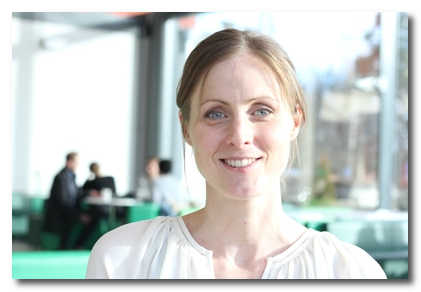
Packaging is an important part of a product, and protects and preserves its contents. It should also provide information about the contents and invite potential buyers to make a purchase. If the board material contributes towards satisfactory print quality being achieved quickly and easily, it will be possible to use a greater proportion of all board that is manufactured and transported to printers, and less waste will therefore be generated.
To ensure that board will work well during printing, its properties are checked when it is produced. This production control could become even better if the way in which the board will absorb printing ink is also monitored, in addition to ensuring that the surface is sufficiently smooth.
In her licentiate studies carried out at Innventia, Sofia Thorman has developed a new method that can be used to check how evenly board absorbs liquid. Previously, there was no technique available to carry out this type of measurement.
Sofia used the new method to study coated board material used for liquid packaging such as milk and juice cartons. The results suggest that an uneven absorption of printing ink can lead to images and text having a mottled appearance with an uneven structure. This could explain why printing problems sometimes arise despite the board surface being smooth.
"The method looks promising in the studies we've carried out so far," says Sofia. "I look forward to carrying out trials on a larger scale, in order to confirm that the technique can provide valuable information for board manufacturing at Swedish mills."
"These methods were used within the Tools to Predict Flexographic Print Quality for Packaging research cluster, which was concluded in December 2014, and will also be of benefit in the recently launched Boosting Packaging Performance programme," adds Anita Teleman, Research Manager for Printing Solutions at Innventia.
For more information, contact
Sofia Thorman, tel. +46 (0)768 767133, This email address is being protected from spambots. You need JavaScript enabled to view it.
Anita Teleman, tel. +46 (0)768 767474, This email address is being protected from spambots. You need JavaScript enabled to view it.
The work was carried out at Innventia within the Vipp (Values Created in Fiber Based Processes and Products) industrial graduate school at Karlstad University, with support from the KK Foundation. Sofia Thorman received her licentiate degree on 5 March 2015 with her thesis "Absorption non-uniformity characterisation and its impact on flexographic ink distribution of coated packaging boards".
Andreas Fall Awarded 2015 Alf de Ruvo Scholarship
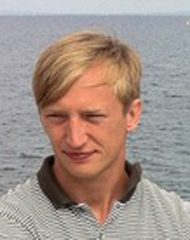 The 2015 Alf de Ruvo scholarship, worth SEK 500,000, has been awarded to Dr. Andreas Fall for his comprehensive mapping of colloid chemistry interactions in nanocellulose systems, which may contribute to the development of entirely new materials.
The 2015 Alf de Ruvo scholarship, worth SEK 500,000, has been awarded to Dr. Andreas Fall for his comprehensive mapping of colloid chemistry interactions in nanocellulose systems, which may contribute to the development of entirely new materials.
The Alf de Ruvo Memorial Foundation awards scholarships to researchers within the sphere of cellulose-fibre-based materials. The amount of each scholarship is SEK 500,000. The foundation was formed in 2000 with funds donated in memory of Alf de Ruvo (1938–2000), Licentiate of Engineering and Executive Vice President of SCA.
Through experiments, the 2015 Alf de Ruvo scholarship winner Andreas Fall has shown which factors that control the surface potential of nanoscale cellulose, and how, by controlling the surface potential, the cellulose nanofibrils can be oriented, so strong continuous fibres can be produced. Andreas has also managed to produce fibril reinforced composites of polymethylmethacrylate by checking the gel formation of nanoscale cellulose.
This work has deepened our understanding of the fundamental mechanisms that will contribute to the development of entirely new material types such as foams, composites and reconstituted cellulose fibres based on nanocellulose.
“My vision is to in future work be able to orient and modify fibrils so that they may be used in, for example, oriented water-absorbing foams, batteries, super strong composites or ultra-capacitors”, says Andreas.
Andreas Fall currently works at the Environmental and Material Chemistry Department at Stockholm University. His new task is to utilize his colloidal knowledge to develop lightweight and mechanically robust porous materials based on cellulose nanofibrils (CNF) with improved fire retardency. A potential application is thermal isolation, for example in house walls and in electronic components. A suitable research environment for Andreas’ continued work is with Professor Christopher Weder at the University of Fribourg in Switzerland, which this scholarship makes possible.
Andreas Fall was born in Västerås, Sweden, 1981. He obtained his Master’s Degree in Biotechnology from Chalmers University of Technology, and achieved his Ph.D. in Fibre and Polymer Science 2014 from the Royal Institute of Technology (KTH), where Professor Lars Wågberg was his main supervisor.
The scholarship was awarded today at a ceremony in Stockholm in conjunction with the Ekman Days conference sponsored by the Swedish Association of Pulp and Paper Engineers.
About Alf de Ruvo
Alf de Ruvo (1938-2000) was well-known and respected within the forest and paper industry. He held several leading positions, including Deputy CEO of SCA. He was also the Chairperson of FPIRC the Forest Products Industrial Research College at KTH. He carried out broad research within the field of cellulose fibre-based materials and contributed to the development of world class technical paper research. Within the packaging field he worked with the mechanical properties of paper and their importance for conversion and final use.
The Alf de Ruvo’s Memorial Foundation was established in 2000 with funds donated in his memory. Its purpose is to support forestry industry education and research activities that benefit technical and scientific progress within the industry.
The scholarships are appointed by the members of the Board of the Foundation in consultation with a research council. There is no application process.
Members of the Board: Prof. Tom Lindström (Innventia and KTH), Dir. Mikael Schmidt (Senior Vice President, SCA) and Associate Professor Rolf Andersson (Fellow Scientist Hygiene/Microbiology, SCA).
Research Council: Dir. Christer Söremark (consultant and researcher within the forest industry), Prof. Myat Htun (Mid Sweden University, Sundsvall), Prof. Gunilla Jönson (Principal of the Technical University of Lund), Prof. em. Gunnar Svedberg (consultant and former CEO STFI-Packforsk), Dr Micael Stehr (Head of FPIRC, KTH), and Head of Dept Ulf Carlson (Chalmers).
For more information please contact:
Tom Lindström
Principal scientist
INNVENTIA AB
Phone direct +46 (0)8 676 7370
Cell: +46 (0)70 657 01 94
e-mail; This email address is being protected from spambots. You need JavaScript enabled to view it.
Test bed aiming at new 3D paper products
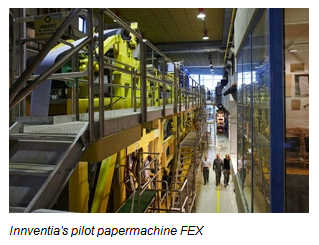 Innventia has been granted SEK 2.75 million from VINNOVA for the establishment of a full-scale test bed for processes that create highly deformable paper. This will enable verification of new product concepts and lead to a decrease of non-biodegradable waste streams and more energy efficient production processes.
Innventia has been granted SEK 2.75 million from VINNOVA for the establishment of a full-scale test bed for processes that create highly deformable paper. This will enable verification of new product concepts and lead to a decrease of non-biodegradable waste streams and more energy efficient production processes.
In January 2015, a rebuilding of Innventia’s FEX pilot plant with new units for producing highly deformable paper starts. The pilot units will be modular and can be used separately or together with the FEX pilot paper machine. This will be the start of a new project called PhD-paper which aims to establish a full-scale test bed for processes that create highly deformable paper. These processes will, on one hand, broaden the design window for forest based raw materials and, on the other hand, create opportunities for verification of new application areas and markets.
With the help of an industry consortium and Innventia’s gathered knowledge base and machine park, new technologies that are industrially viable will be made available for verification of new product concepts. During the project, value chains for new products as well as for commercial products with extended properties will be identified. One possible application is 3D packaging. Traditionally, paper has only been used to manufacture packages with flat surfaces. What restricts the use of paper for 3D packages, i.e. with curved surfaces, is the lack of industrial processes to produce paper material with a high level of stretchability in the cross direction.
“The idea with this investment is to enable testing of new energy efficient production concepts for paper qualities that will, for example, make it possible to replace some of today’s 3D packages in plastic and thereby reducing the amount of non-biodegradable plastic waste,” says project manager Mikael Magnusson.
The PhD-paper project runs for two years with a total budget of SEK 8.1 million of which VINNOVA, the Swedish Innovation Agency is financing 2.75 million. The project partners are Innventia, Gruppo X di X Gruppo, BillerudKorsnäs, Stora Enso and Tetra Pak.
For more information, please contact Mikael Magnusson, tel. +46 (0)768 767192, This email address is being protected from spambots. You need JavaScript enabled to view it. or Torgny Persson, Director Business area Material Processes, tel. +46 (0)768 767308, This email address is being protected from spambots. You need JavaScript enabled to view it..
Delegation from the pulp and paper industry in South America
A Delegation from Brazil and Chile visited Sweden October 12 - 17, 2014, invited by Swedish Pulp & Paper Technology Group, PPT, in cooperation with Business Sweden’s office in São Paulo, Brazil. The purpose of the visit was to present Swedish technology for important decision makers and to give an opportunity for the Swedish suppliers of technology to develop their business in South America.
”The members of Swedish Pulp & Paper Technology Group, PPT, supplying technology to the forest industry all around the world, have regular meetings with representatives from the forest industry in South America, particularly Brazil and Chile. These meetings are important for developing a competitive forest industry in the region and they also bring business opportunities for Swedish suppliers of technology”, says Ulf Frölander, chairman of PPT.
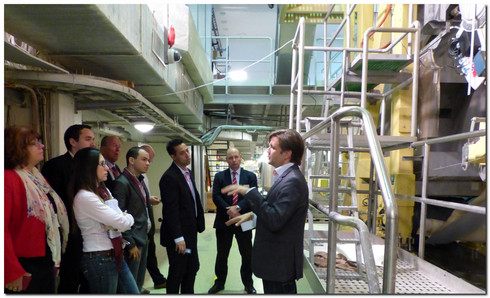
The Delegation consisted of 17 persons representing 11 companies in Brazil and Chile, among others well-known producers of pulp and paper such as Arauco, CMPC, Klabin and Veracel. The Delegation met with ABB/Lorentzen & Wettre, Alfa Laval, Akzo Nobel Pulp & Performance Chemicals, Andritz, Bosch Rexroth/Hägglunds, Chemrec, Clean Combustion, Elof Hansson, Firefly, NAF, Outokumpu Stainless, Purac, Somas Instrument, UMV Coating, Valmet and Yara Environment. In connection with study visits to ÅF Industry, Sweco, Billerud Korsnäs and Innventia, individual business meetings were arranged between the visitors from Brazil and Chile and the Swedish technology companies.
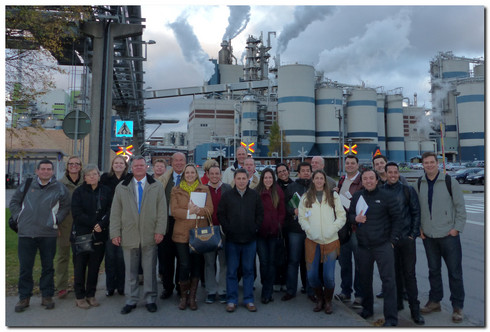
The industry in Brazil and Chile are searching technical solution for increased productivity as they aim at expanding pulp production based on planted fast-growing forests, as well as focusing on increased production of different paper grades. The world is aware that significant technological advancements have originated in Sweden and international producers attentively watch our new techniques for pulp and paper production.
For further information, please contact:
Ulf Frölander, Chairman of PPT, This email address is being protected from spambots. You need JavaScript enabled to view it., phone +46 70-257 2900
Åke Ryhagen, Project Manager, This email address is being protected from spambots. You need JavaScript enabled to view it., phone +46 70-883 8683
PPT, Swedish Pulp & Paper Technology Group, is an association formed in 1989 by the Swedish Trade Council (now Business Sweden) along with member companies. Emphasising environmental concerns, energy conservation, productivity increases and quality control, they are all dedicated to promoting Swedish pulp and paper technology around the world, www.pptgroup.se.
Thermographic method reveals the drying time in the sheet
Lower grammages significantly changes the behaviour of the drying rate and air flow during tissue production. This was pointed out in a new Licentiate thesis presented by Aron Tysén on 30 September at Karlstad University.
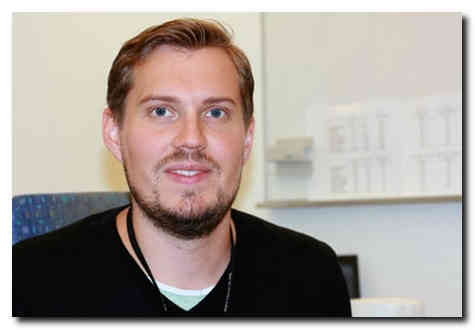
The removal of water is an integral part of tissue production. Through air drying (TAD) is used for premium tissue grade products. This process provides both better absorption and bulk compared to traditional dewatering by pressing, but is very energy intensive. A better understanding of the TAD process may lower energy demand.
Aron Tysén has in his licentiate work at Innventia investigated the influence of grammage, formation, i.e. variation in local grammage, and pulp type on non-uniform drying and air flow through the sheet. A method was developed, based on infrared thermography, to determine local drying time of laboratory sheets on a sub mm-scale, while monitoring air flow and pressure drop of the TAD process. Modified permeability, i.e. the air flow through the fibre network at a given grammage, was used to evaluate air flow characteristics.
The results from the studies presented in the thesis "Through air drying - The influence of formation and pulp type on non-uniform drying and air flow" show, somewhat unexpectedly, that neither the pulp type, nor the formation has much influence on the drying rate and the non-uniformity of drying. Grammage, however, seems to play a crucial role. For low grammages, only small mass-specific drying rate variations between the sheets were noted. For higher grammages, however, the mass-specific drying rate became dependent on the modified permeability to an increasing extent, suggesting a change in drying mechanisms with grammage.
"This implies that TAD at low grammages would not benefit from high through air flows. It might be better to have a longer drying section with less air flow, allowing saturation of the drying air", says Aron Tysén.
The Licentiate degree was the first milestone towards a PhD degree. For Aron's further studies, many avenues are possible with the developed technique. For instance a closer look at the influence of the TAD wire design on the local drying times, which would be possible with the high resolution obtained with the thermographic method.
"The methodology developed by Aron has shown that thermography can be used to calculate the drying rate. In the next step, it would also be possible to match the drying time maps against other measurements such as grammage maps which could lead to greater understanding of connections between, for instance, grammage variations, moisture variations, and local drying times, says Hannes Vomhoff who has been Aron's supervisor at Innventia.
For more information, contact
Aron Tysen, tel. +46 768 767497, This email address is being protected from spambots. You need JavaScript enabled to view it.
Hannes Vomhoff, tel. +46 768 767488, This email address is being protected from spambots. You need JavaScript enabled to view it.
This study was performed as part of the Industrial Graduate School VIPP (Values Created in Fiber Based Processes and Products) at Karlstad University, with the financial support of the Knowledge Foundation.
Mobile factory that produces nanocellulose
Innventia and BillerudKorsnäs have entered a collaboration with the purpose of building a mobile demonstration plant for nanocellulose and to test the material in full-scale papermaking. The project is financed by Vinnova, Innventia and BillerudKorsnäs.
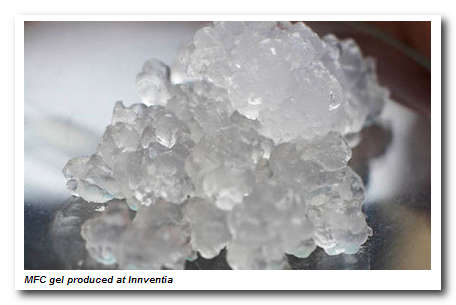
Nanocellulose can be used as additives in papermaking to make lighter and stronger paper and board. It can also be used in a variety of other applications in the food, pharmaceutical, and construction industry. This means that paper is given completely new properties and could replace plastics, for example, in many areas. More products could thus be produced from renewable and biodegradable raw material.
Innventia runs since 2010 a pilot plant for the production of nanocellulose at the research institute in Stockholm. By this establishment, sufficiently large amounts of nanocellulose could be manufactured for research and development addressing paper applications. In a unique collaboration between BillerudKorsnäs and Innventia, a mobile demonstration plant is now being built which makes it possible to produce nanocellulose on a large scale for use in full-scale trials on paper and board machines.
“Nanocellulose has a fantastic potential in paper applications as well is a number of other applications. This new project is exciting as it gives us the possibility to validate the potential in full scale,” says Mikael Ankerfors, Project manager, New Business Lab, BillerudKorsnäs.
“Innovation is at the core of our business model. To be part of this project and explore the potential of full scale production of nanocellulose is a perfect match with our mission to challenge conventional packaging for a sustainable future,” says Magnus Wikström, SVP Strategic Development, BillerudKorsnäs.
“This is a very important step. The availability of test beds and demonstration plants are often crucial for up-scaling new processes resulting from our research and development,” says Anna Wiberg, Director of Business Development Materials Processes, Innventia.
“Thanks to the collaboration with BillerudKorsnäs, the development towards new nanocellulose-based materials can take a leap. Later, we will offer more companies access to the demonstration plant as a support in their innovation processes,” says Torgny Persson, Vice President Material Processes, Innventia.
Start of new tissue paper research cluster
This month, research company Innventia is launching a new project within the field of tissue paper. The participating companies and Innventia have now together decided on the focus for the next two years. Having previously concentrated on energy issues, the new cluster will focus more on product properties and different aspects of this.
The project, known as a cluster, is part of Innventia’s Cluster Research Programme, and follows on from the previous tissue cluster which ended last winter. Pulp manufacturers, their suppliers and tissue manufacturers will all be involved in the project, and have helped to shape the focus and content of the cluster.
“One key aspect of the Cluster Research Programme is that the content is adapted according to the participating companies, so that the results really do meet future needs in terms of problem-solving and development,” explains Innventia’s Mattias Drotz. “Together with suppliers, customers and competitors, we are carrying out research in order to build up knowledge that will move technology forwards.”
During the kick-off, which was held last week, the project participants set important priorities. Mattias is pleased with the results:
“The atmosphere was excellent, and we now have a clear direction for the project’s activities.”
Hannes Vomhoff is the scientific advisor of the tissue research cluster and one of the participants from Innventia at the kick-off session:
“In the previous tissue cluster, we focused on energy efficiency, which is an important aspect of all papermaking, but we will now be focusing on different aspects of product functionality. For example, this will involve investigating the mechanical properties of low grammage products and ways in which the fibres can be modified to make them stronger.”
The fibre properties also affect the conditions for the manufacturing process. For example, problems with dusting can arise in the paper machine during manufacturing, as well as during conversion and post-treatment, or when used by the end-consumer. It is also important for manufacturers to optimise the use of the raw material for cost reasons.
“By finding the right type of fibres, we can reduce the grammage and thus minimise the cost of the raw material,” continues Mattias.
